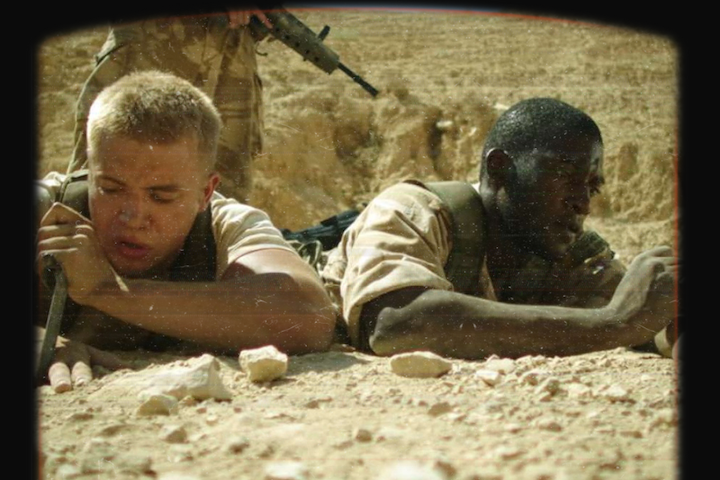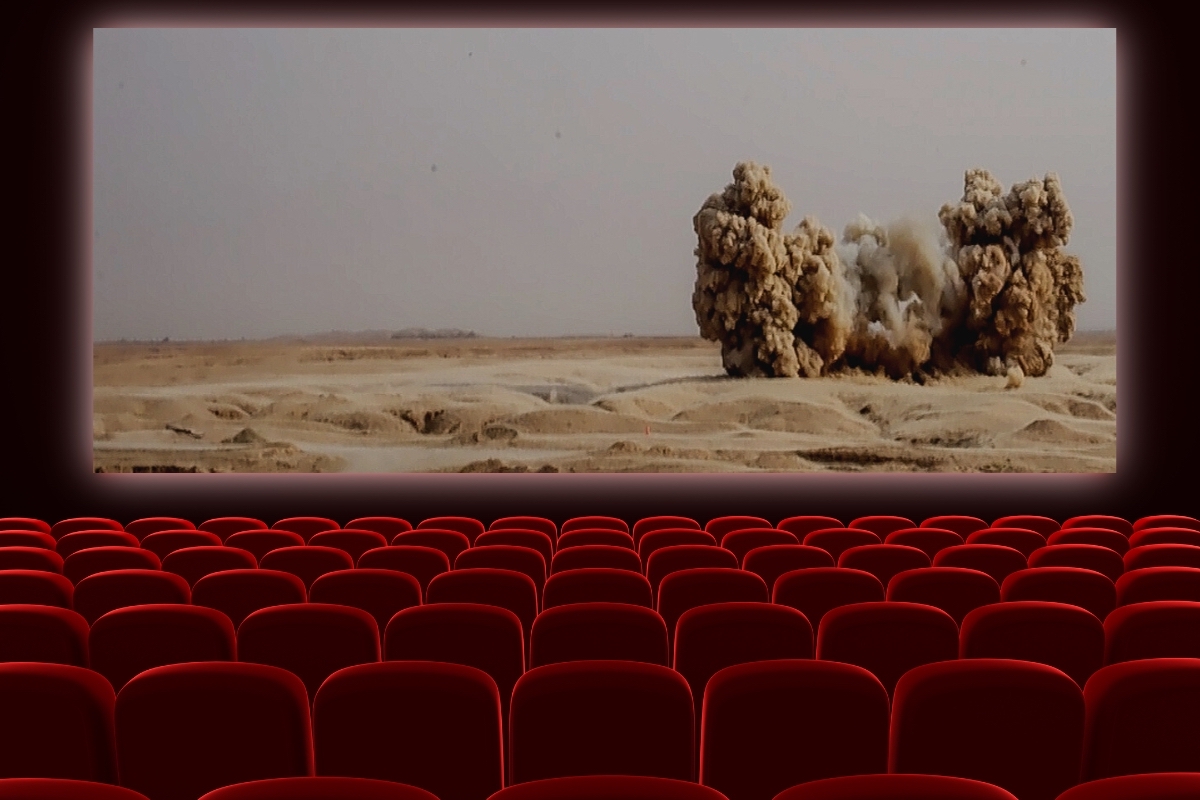The Hollywood Landmine Myth
by Markus Schindler
The air is thick with tension as the sun begins to set. A small group of soldiers cautiously make their way through a field. Every step is deliberate, every movement calculated. They’ve been warned about the risk of mines, but the urgency of their mission leaves them no choice but to cross this perilous terrain.
Private Jackson, the youngest of the group, hums a tune from back home, trying to keep the fear at bay. As he takes another step, a faint ‘click’ is heard under his boot. The humming abruptly stops, giving way to a deafening silence. The men freeze.
“Damn,” Jackson whispers, his face going pale. He doesn’t need to look down to understand what just happened. The weight of his foot has activated a landmine, and lifting it would likely set it off.
“Nobody moves!” orders Sergeant Mitchell in a low and steady voice. He knows that panic is their worst enemy.
Jackson looks around, sweat forming on his brow. “Sarge, what do I do?” he asks with a trembling voice.
“Stay calm, Jackson,” Mitchell replied, slowly approaching him. “We’re going to get you out of this.”
Corporal Diaz, the squad’s explosives expert, approaches with extreme caution. “Sarge, if he lifts his foot, the mine’s going to blow. We need something to replace the pressure.”
Mitchell nods, thinking quickly. “Ramirez, go fetch the sandbags from the pack. We’re going to try to balance the weight.”

Monuments Men (2014)
World War Two: a special American unit is tasked with recovering works of art stolen in Germany.
This type of scenario is found in countless war movies. The notions that a mine detonates once the pressure of a person’s foot on it is released adds a dramatic element. Powerful stories are built around this pivotal moment, sometimes focusing on the strong bonds of brotherhood between soldiers (e.g., Monuments Men (2014), The Boys in Company C (1978)), or to depict the ruthlessness and cynicism of the enemies (e.g., Behind Enemy Lines (2001)). Some films are entirely dedicated to this sequence, such as Landmine Goes Click (2015), Mine (2016), and No Man’s Land (2001).
So what to make of this? Is there really a faint ‘click,’ courtesy of landmine manufacturers, that gives a person a chance to say a final prayer or, even better, be saved? Do landmines really function like this, only detonating once a person’s foot is lifted off?
Landmine Goes Click (2015)
Three tourists travel through Georgia, a trip that turns into a disaster when one of them finds himself trapped with his foot on a mine.

If it sounds too good to be true, that’s because it is.
The goal of military engineers who deploy landmines—and of the arms manufacturers who produce them—is to create a device that prevents the enemy from entering an area or, at the very least, slows them down reliably. Obviously, the best way to achieve this is by using a mine that instantly injures a soldier, rather than one that gives them a chance to escape if they have keen enough hearing to detect a ‘click.’
In the real world, anti-personnel mines are typically activated by pressure, tripwire, or remote detonation, depending on the type of device. Blast mines are the most common. They are buried at ground level and triggered by at least 5 to 16 kg (depending on the sensor) applied to their pressure plate. As soon as a person steps on the mine, it explodes. Immediately. The blast is powerful enough to cause severe injuries or death.

Mine (2016)
A soldier finds himself trapped in the middle of a minefield after stepping on an anti-personnel mine.
The mines used in Hollywood films are an invention of the film industry aimed at adding drama and tension.
However, there are certain types of mines that result in a delayed explosion. For example, bounding mines like the German S-mine from World War II (“Bouncing Betty”) have a short time delay before they are fired into the air, where the main charge detonates (obviously, they do not include a ‘click’ sound to alert soldiers to seek cover).
Land of Mine (2015)
In the aftermath of the Second World War, German soldiers who had been taken prisoner of war are given the task of clearing mine from the Danish coast, risking their lives in the process.

There are also anti-tank mines that require pressure (over 115 kg) to be applied not once but twice. These devices are called ‘double impulse mines’ and serve various purposes, including cutting off the leading tank of a column from the rest by targeting the second tank, or to lure tanks deep into a minefield before the first mine explodes.
Some mines are equipped with both pressure and pressure-release switches. The objective of the – additional – pressure release switch is to target the deminer who tries to move the mine.
Clearly, none of these very real mines function like the ‘Hollywood mine.’ However, there are some gripping movies that reveal the grim reality of landmines. Among them are Land of Mine (2015) and Kilo Two Bravo (2014), based on true stories. The sad truth is: when someone steps on a mine, it’s already too late.

Kilo Two Bravo (2014)
In this true story, a unit of British soldiers find themselves at the mercy of the Taliban, while being trapped in a minefield left over from the Soviet invasion.
For most of us, the Hollywood misrepresentation of mines has no consequences other than providing us with a cinematic thrill. However, the situation is vastly different for people living in mine-affected countries. This misleading portrayal can create a false sense of security due to a lack of understanding of how these devices actually work, potentially leading to fatal accidents.
This is where risk education comes into play. By conducting awareness campaigns among people living in areas contaminated with explosive remnants of war, organisations like FSD provide them with the necessary knowledge to protect themselves effectively.
Explosive ordnance risk education is of crucial importance. It serves as a counterbalance to Hollywood myths and enables communities to be better prepared to face the real dangers lurking beneath their feet.
Get more information on Mine Action here.



